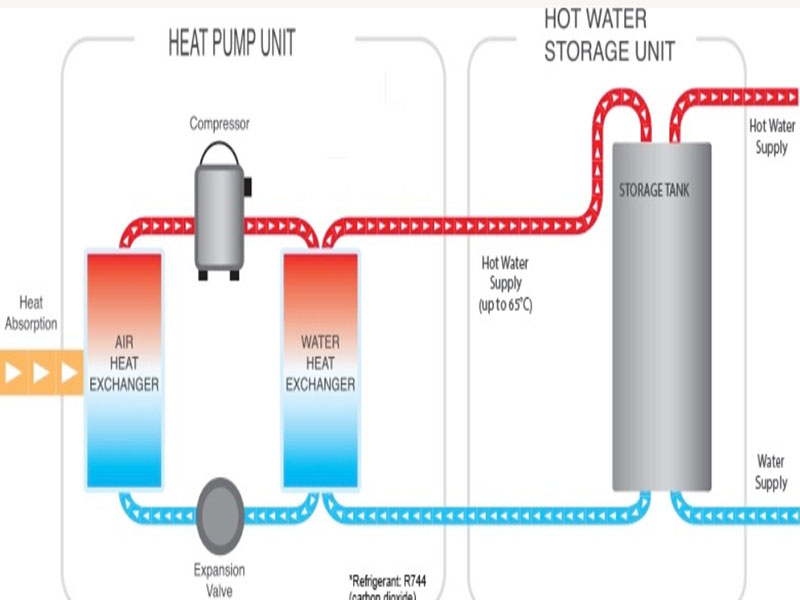
Most people are now familiar with split system heat pumps for heating and cooling air, which are filled with a hydrofluorocarbon refrigerant with a big global warming potential (GWP) as much as 1700 times that of CO2. The Sanden is a split system with CO2, which has a GWP of precisely 1. But the phase change takes place under high pressure and at a much higher temperature, so it is no good for cooling.
However it is terrific for heating, and in temperate climates where air conditioning is not a big deal, it works far more efficiently than a conventional water heater, with a COP (coefficient of performance, or multiple of efficiency over conventional resistance heating) of up to 5 when it is hot outside.
In a really well insulated house the unit can be used to heat both the domestic hot water and a hydronic heating system, as is shown in the Vogel Haus photo at top. This seems like a bit of a contradiction, because the colder it gets outside (and the more you need that hydronic heat) the less efficient it gets. But Albert Rooks explains on his Small Planet Supply site that it can be adapted:
For homes with a design temp of 23°F or higher, and a heat load of 8kbtu/hr or less, this can be the entire DHW and space conditioning system. Additional on demand hot water heater systems can be added into a design for homes with larger heat loads or used back up systems to provide added capacity for extreme weather events or large homes where all but the coldest days can be supplied by the default Sanden system.
Remark:
Some of the articles are taken from the Internet. If there is any infringement, please contact us to delete it. If you’re interesting in heat pump products,please feel free to contact OSB heat pump. We are your best choice.

